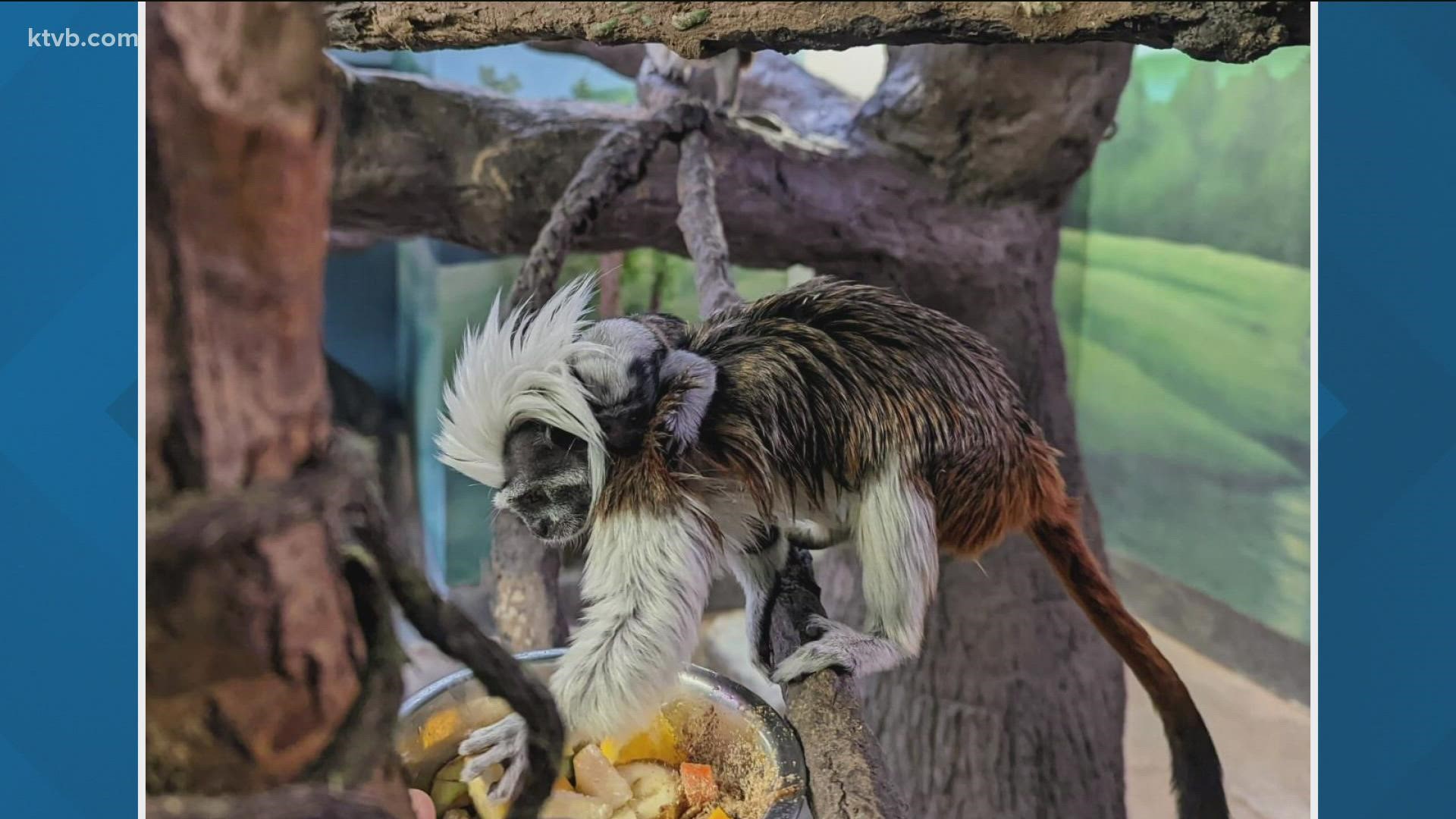BOISE, Idaho — Zoo Boise announces new cotton-top tamarin born at the zoo on Feb. 17.
The baby tamarin was born to parents, Eddy and Mimi, and is the couple's firstborn. Eddy was already a father from his time at the Rolling Hills Zoo in Kansas.
"Both mom and baby are doing well and adjusting to life at the zoo," Zoo Boise Director, Gene Peacock said. "This is an exciting addition to our zoo family and one that will help further our conservation mission and our work to support endangered species."
Zoo Boise, a Boise Parks and Recreation division, says guests can visit the cotton-top tamarin family at the zoo in the Small Animal Kingdom. Zoo staff is asking guests to keep their voices calm and quiet when viewing the baby to limit any extra stress on the new parents or child.
The baby will be found clinging to either mom or dad until it is old enough to move around on its own, as cotton-top tamarins do in the wild. The baby's mom and dad are excellent parents and have already become very protective of their young.
Zoo staff will determine the sex of the baby during its first veterinarian exam at a later date.
Cotton-top tamarins only weigh 1.4 – 1.75 ounces at birth, with adults weighing up to about one pound. Wild cotton-top tamarins have only been found in the northwest region of Colombia and are classified as critically endangered by the International Union for Conservation of Nature (IUCN) Red List.
Zoo Boise says the birth is very exciting and significant for the zoo. The baby's parents, Eddy and Mimi, were matched as part of the Cotton-Top Tamarin Species Survival Program (SSP).
The SSP is one of the many important conservation programs for the Association of Zoos and Aquariums (AZA). The primary role of the program is to serve as a breeding program for selected endangered or threatened species.
The program's goal is to maintain a healthy and genetically diverse population for these animals to increase their numbers and be able to reintroduce certain zoo-bred animals into their natural habitats if necessary.
Watch more Local News:
See the latest news from around the Treasure Valley and the Gem State in our YouTube playlist:

